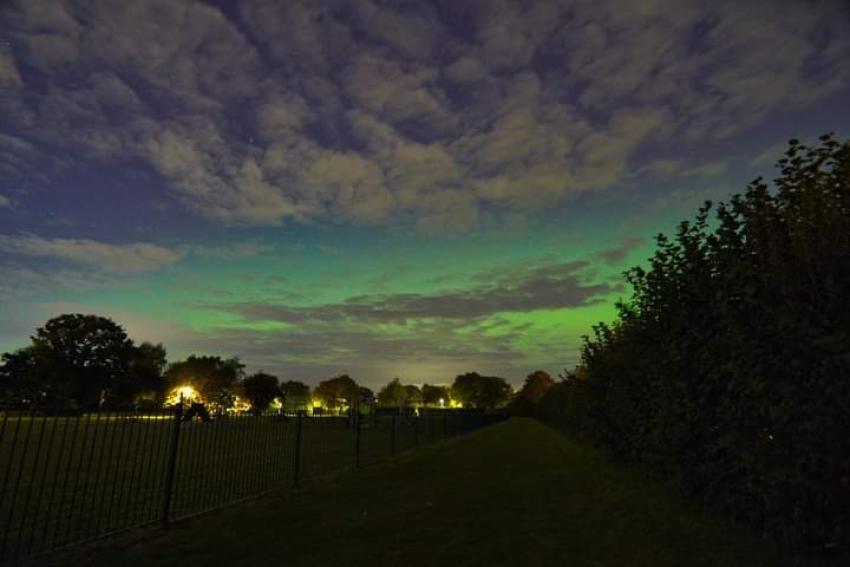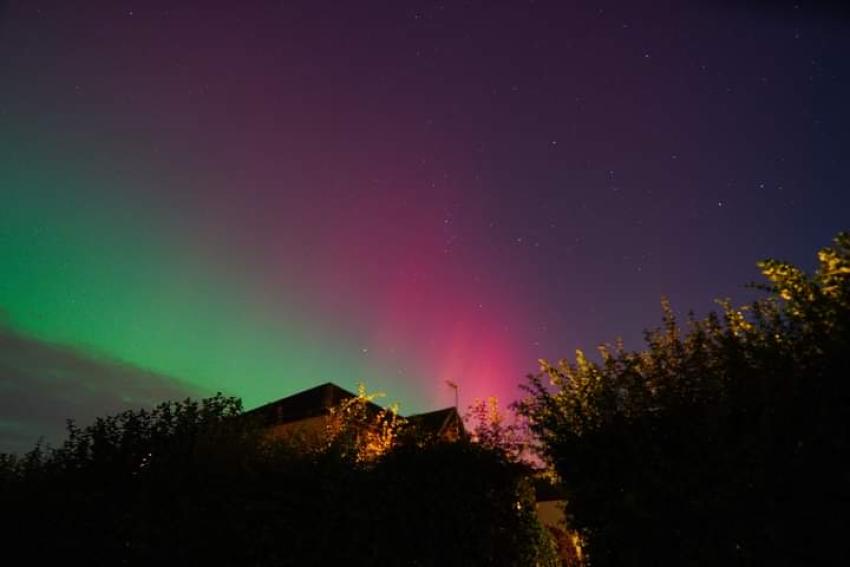The Northern Lights have again lit up parts of the UK in the most stunning fashion, five months after doing the same following the most extreme geomagnetic storm in two decades.
Such a show is rare, but not entirely unexpected given that the Sun is expected to reach the most active period in its 11-year solar cycle in 2024, making solar storms - and therefore the chance to see the Northern Lights - more likely.
Spectacular images were captured across the UK, including as far south as Lewes in East Sussex, as well as in skies above Kesgrave in Suffolk, Frieth in Buckinghamshire and Gwynedd in Wales.
It was the strongest and most widespread showing of the phenomenon in the UK since 10 May 2024.
That display of the lights, also known as aurora borealis, was caused by a so-called cannibal Coronal Mass Ejection (CME), where the charged particles combine during their journey to Earth and spark an extreme geomagnetic storm classed as the highest G5.
Prior to May this year, the last of these G5 storms to hit our planet happened in 2003 - so they’re very rare.
Known as the solar maximum, when the Sun reaches its most active period it has more sunspots than usual because its magnetic field is becoming stronger and at its most complex, leading to the release of massive amounts of energy in the form of solar flares and, crucially for aurora, CMEs.
- Did you get a picture of the Northern Lights above the UK last night? Send them to press@ras.ac.uk and we'll share them on our website and across our social media channels.
Media contacts
Sam Tonkin
Royal Astronomical Society
Mob: +44 (0)7802 877700
Robert Massey
Royal Astronomical Society
Mob: +44 (0)7802 877699
Notes for editors
About the Royal Astronomical Society
The Royal Astronomical Society (RAS), founded in 1820, encourages and promotes the study of astronomy, solar-system science, geophysics and closely related branches of science.
The RAS organises scientific meetings, publishes international research and review journals, recognises outstanding achievements by the award of medals and prizes, maintains an extensive library, supports education through grants and outreach activities and represents UK astronomy nationally and internationally. Its more than 4,000 members (Fellows), a third based overseas, include scientific researchers in universities, observatories and laboratories as well as historians of astronomy and others.
The RAS accepts papers for its journals based on the principle of peer review, in which fellow experts on the editorial boards accept the paper as worth considering. The Society issues press releases based on a similar principle, but the organisations and scientists concerned have overall responsibility for their content.




